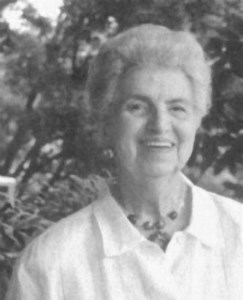
NPS photo
The NPS Cultural Anthropology program, originally known as the Ethnography program, was established in 1981 by Muriel "Miki" Crespi (1929-2003). Dr. Crespi completed her undergraduate studies at Columbia and received a Ph.D. in anthropology from Illinois University. In 1981, after spending time in academia at Hunter College, Wisconsin, and Brown, she was hired by the NPS to complete a Native American relationships policy and to design and initiate an applied anthropology program. Dr. Crespi's consistent focus was on contemporary peoples and traditional communities associated with NPS' cultural and natural resources. Consultation and data-gathering requirements embodied in statutes such as the American Indian Religious Freedom Act (AIRFA), the Alaska National Interest Lands Conservation Act (ANILCA), the National Environmental Policy Act (NEPA), the National Historic Preservation Act (NHPA), and the Native American Graves Protection and Repatriation Act (NAGPRA) require and reinforce this focus as the NPS works to preserve and protect the resources under its stewardship.
Dr. Crespi was instrumental in finalizing the first NPS Native American relations policy in 1987. With assistance from NPS leaders and professional academic associations, Dr. Crespi was fundamental to the process of acquiring funding in 1991 to hire cultural anthropologists in regional offices. By 1996, five cultural anthropologists were in field offices and cultural anthropologists were in several parks throughout the system.
Dr. Crespi was instrumental in finalizing the first NPS Native American relations policy in 1987. With assistance from NPS leaders and professional academic associations, Dr. Crespi was fundamental to the process of acquiring funding in 1991 to hire cultural anthropologists in regional offices. By 1996, five cultural anthropologists were in field offices and cultural anthropologists were in several parks throughout the system.
In creating the program, Dr. Crespi conceived and defined two key concepts –
- Traditionally associated peoples -- tribes and communities that are traditionally associated with a park that contains resources considered essential to their development and continuing identity as culturally distinct peoples.
- Ethnographic resources -- those cultural and natural resources that have traditional cultural meaning and value to traditionally associated peoples.
Dr. Crespi instilled in the program the fundamental tenet that the research methods and theoretical base of cultural anthropology could be used to identify traditionally associated peoples and communities, and the resources they value.
Dr. Crespi's goal for the Ethnography program in the 1980s was the same as it is for today's NPS cultural anthropologists -- "The National Park Service Applied Ethnography Program - under federal and NPS legal and policy mandates - focuses on living people linked to the parks by religion, legend, deep historical attachment, subsistence use, or other aspects of their culture. Through consultation and research, the program makes their voices more audible - and the resources they traditionally value more visible - in the agency's resource and development decision-making process."
Last updated: March 30, 2016
